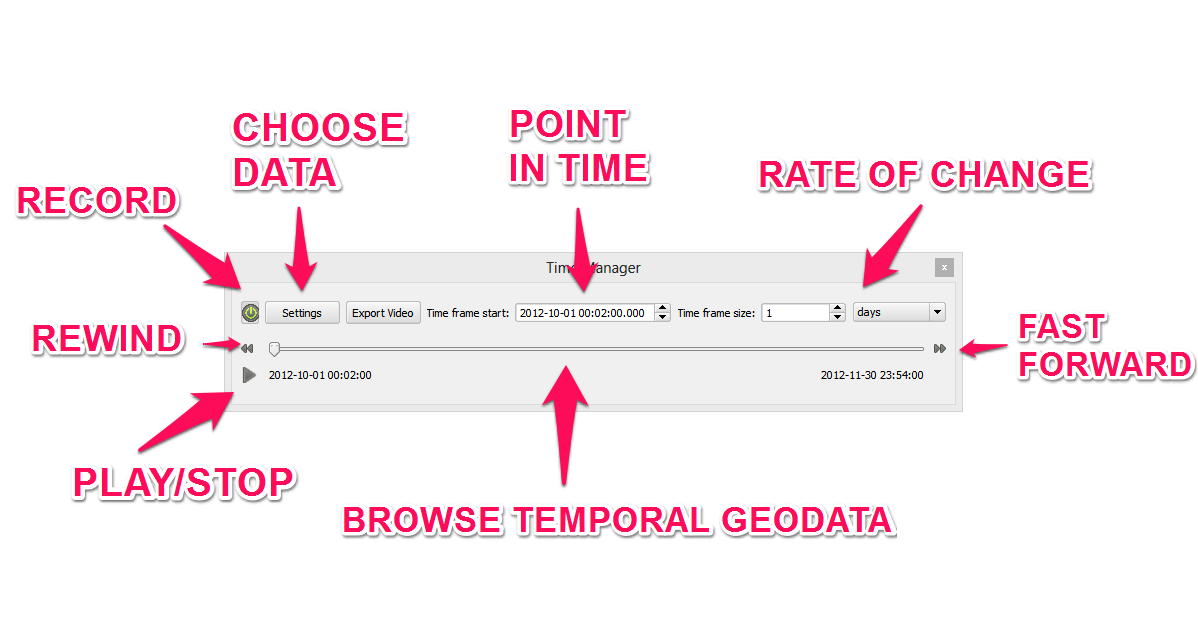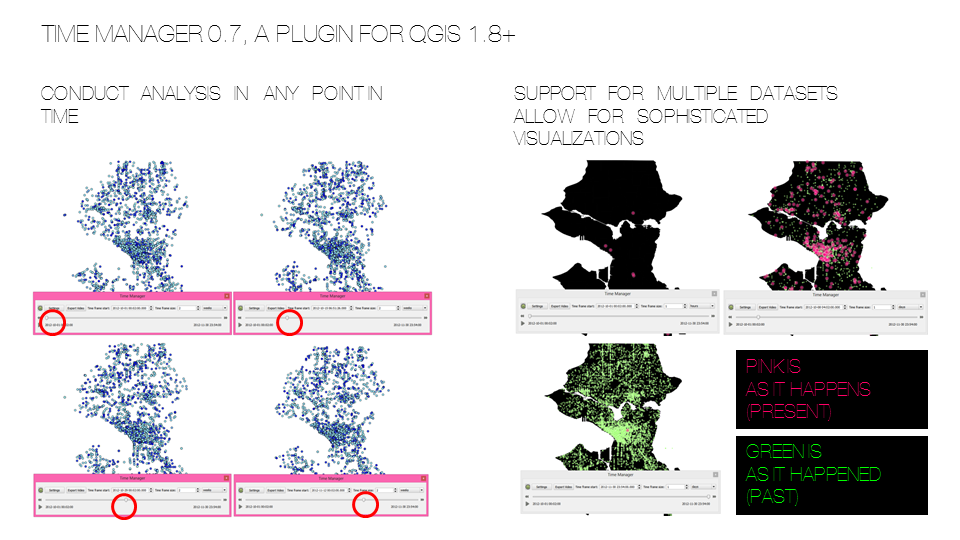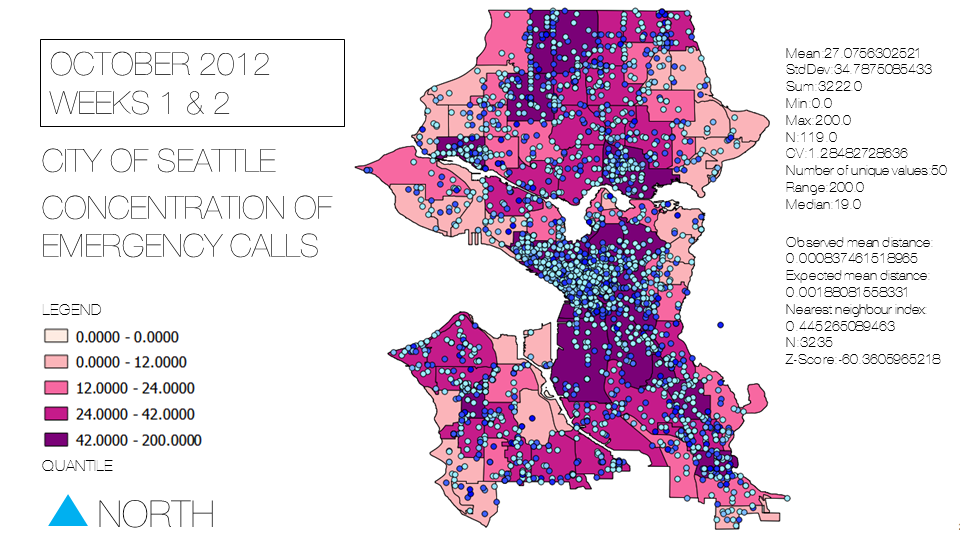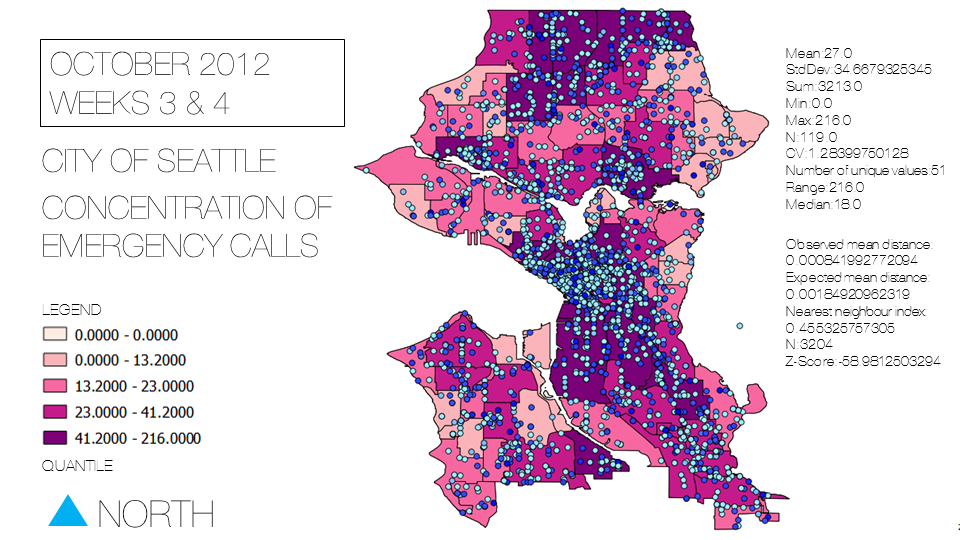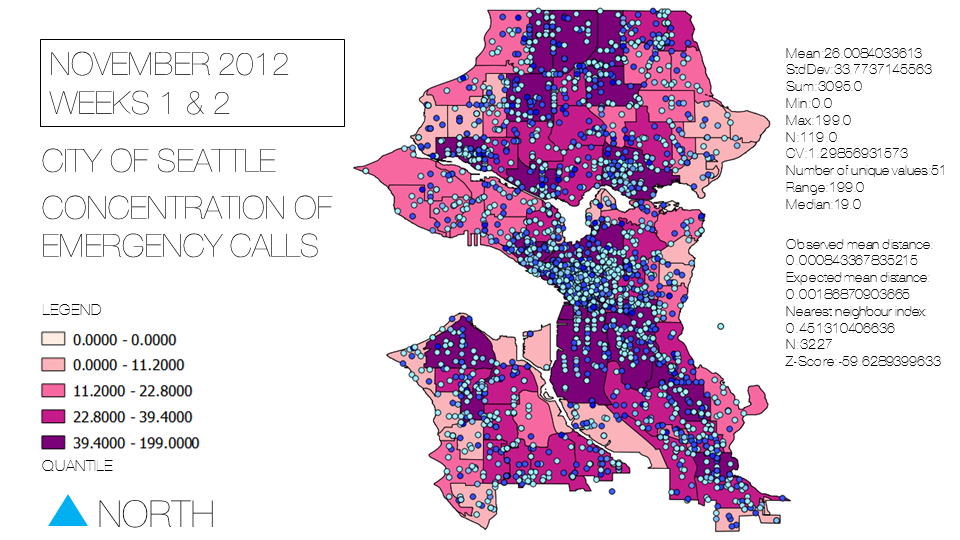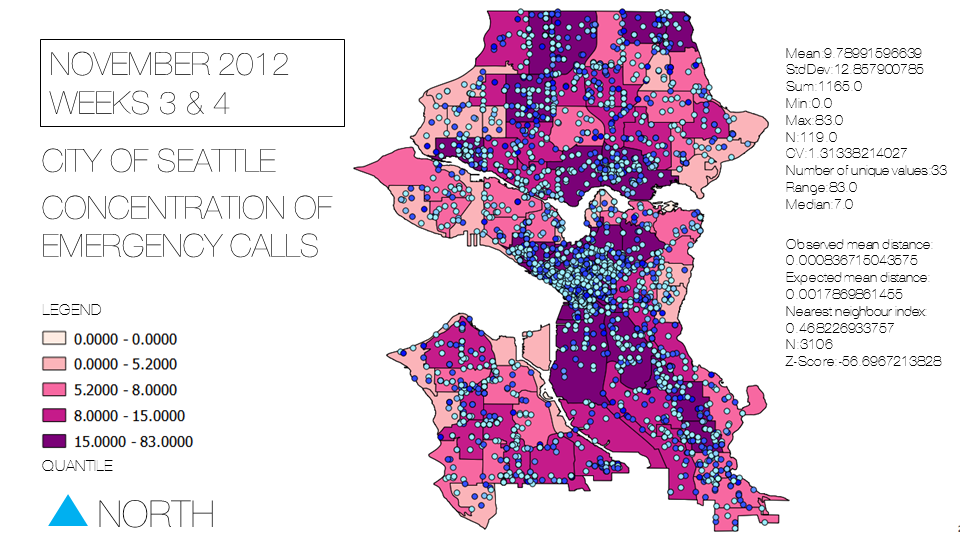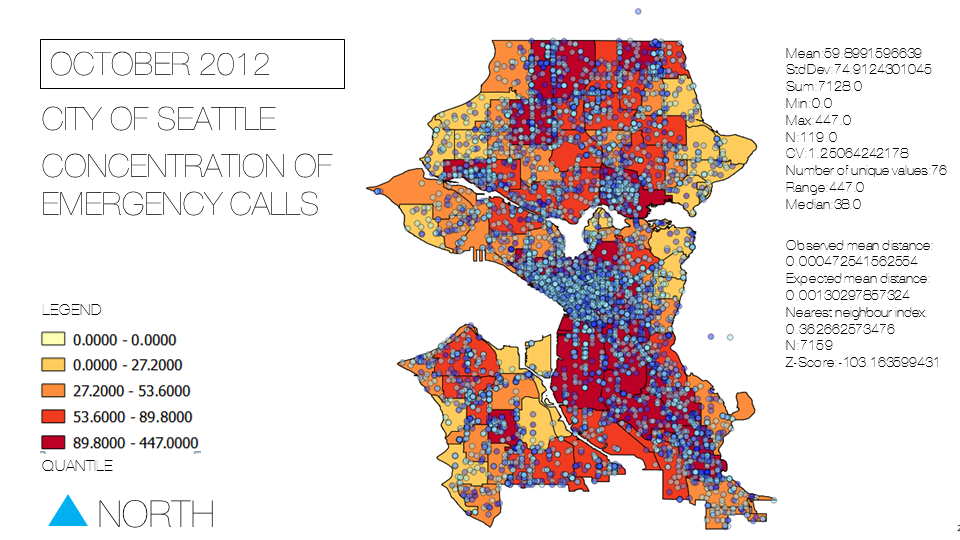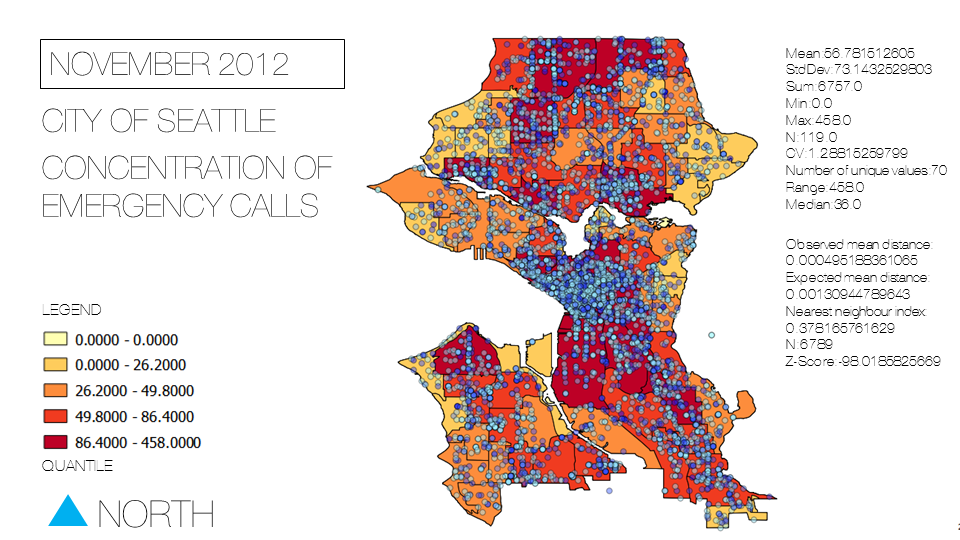Difference between revisions of "Visualizing Multi-Temporal Data with Time Manager"
| Line 71: | Line 71: | ||
* 3: Press on add layer on the popup menu |
* 3: Press on add layer on the popup menu |
||
* 4: Make sure the layer is "2020 Emergency Calls Seattle" and the start time is set to "date_dateT" and press "Ok" to finish |
* 4: Make sure the layer is "2020 Emergency Calls Seattle" and the start time is set to "date_dateT" and press "Ok" to finish |
||
| + | <gallery> |
||
| + | File:How to get time Manager.png |
||
| + | </gallery> |
||
==Visualizing the Distribution of the Type of Emergency== |
==Visualizing the Distribution of the Type of Emergency== |
||
Revision as of 17:41, 6 October 2020
Contents
Introduction
In a distant universe, 500 milliseconds ago, you embarked on a mission of temporal exploration and spatial pattern analysis. Your task is to map and visualize the occurrences of emergencies in the City of Seattle within your selected timeframe from the year 2020. You will learn to use Time Manager, a plugin for QGIS, so you may conduct spatial analysis at any point in time. Your analyses will be an option of the following: weekly, bi-weekly, or monthly. The analyses you will conduct are:
- 1. "points in polygon" to probe the amount of incidents in a given neighbourhood
- 2. "near neighbourhood analysis" to gauge the average of the distance between incidents
- 3. "basic statistics" such as the mean, median, min, max and the range of incidents in a given time.
Last but not least you will learn to visualize and animate temporal data.
Introduction to Time Manager
Time Manager is a plugin of QGIS that allows for surfing through temporal geospatial data. It allows for visualization and spatial analysis simultaneously.
Introduction to City of Seattle Real-Time 911 Emergency Calls
As per the title, the data you will be using are close to real time, as they are updated every 5 minutes; they comprise all the emergency calls made to the city's various emergency departments.
Estimated Time to Complete
20 minutes at minimum and 40 to 60 minutes at maximum (dependent on your hardware, software, internet connection/speed and distractions).
Requirements
Windows/Macintosh/Linux Compatible
Installing Time Manager
Installing Plugin
- Click "Plugins" a drop down menu should show up
- Click "Manage and Install Plugins..." a menu should pop up
- Click "Install from zip"
- Download zip plugin from here
- Click "Install Plugin" and wait for confirmation of install.
- Click "Close" to exit.
Enabling Plugin
- Click "Plugins" on the toolbar. A drop down menu will appear.
- Click "Manage Plugins"
- Search "Time Manager"
- Enable "Time Manager"
- Click "OK" to exit.
Enabling User Interface
- Time Manager should appear under "Plugins" drop down menu.
- If not, right click on the toolbar, drop down menu will appear; scroll down to Time Manager and check.
- Time Manger should now be at the bottom of your screen.
Getting emergency calls data
- Proceed to this Github link which includes a zip containing all 911 calls for the first 10 months of 2020 in Seattle
- Press download and save the zip file in an appropriate location
Getting Seattle neighbourhood data
- Proceed to the Seattle geoData website and download the City Clerk neighbourhood Shapefile
- Save the file in the same location as the emergency calls file
Importing Data
Importing a Vector Polyline/Polygon to QGIS
- Start QGIS and click "Layer" on the toolbar A dropdown menu will appear.
- Click "Add Vector Layer".
- Browse to the location of the files that you downloaded and select the "2020 Emergency Calls Seattle.shp" and press add
- Repeat the same step for the "City_Clerk_Neighborhoods.shp" to add it
- Ensure that they are in your Layers subsection on the main page of QGIS
Importing a Single Dataset to Time Manager
- Follow the following steps look at the image for reference
- 1: Press Plugin and ensure that visibility is enabled for the Time Manager plugin
- 2: The Manager should now be visible at the bottom of the page, press on the settings button
- 3: Press on add layer on the popup menu
- 4: Make sure the layer is "2020 Emergency Calls Seattle" and the start time is set to "date_dateT" and press "Ok" to finish
Visualizing the Distribution of the Type of Emergency
- Right click on seattle.shp, click "properties" from the drop down menu.
- Browse to the "Style" tab.
- Change symbology from "Single Symbol" to "Categorized"
- Choose "Type" as the column.
- Pick a gradient color ramp.
- Click on the "Classify" button.
Result: Categorized Symbology
Points in Polygon Spatial Analysis
- Click "Vector" on the toolbar. A drop down menu will appear.
- Click "Analysis" from the drop down menu. Another drop down menu will appear.
- Click "Points in Polygon"
- Choose "Neighbourhoods.shp" as the input polygon vector layer.
- Choose "Seattle.shp" as the input point vector layer.
- Choose a output shapefile name, for this tutorial I chose "area.shp".
- Click "OK" to process.
- Click "Close" afterwards to exit.
Results:Bi-Weekly
Results:Monthly
Animation with Time Manager
Importing multiple datasets
- Click on the "Settings" button.
- Click "Add Layer".
- Choose "Seattle_Start.shp" as the Layer.
- Choose "Datetime" column as the Start Time.
- Click "OK" to confirm and exit.
- Repeat process with "Seattle_End.shp" as the Layer.
- Change the offset to -20
- Click "OK"
Result: Visualization
- Screencast of Visualization
- Screenr was used to make a video of the animation.
Conclusion
At this point in time, you have learned to utilize the following to conduct spatial pattern analysis:
- Time Manager plugin for QGIS
- Visualize data with Time Manager
- Animate/Simulate with Time Manager
- Point in Polygon Analysis
- Nearest Neighbour Analysis
- Basic Statistics such as min, max, median and range.
Feel free to share your results in this wiki and/or make this tutorial more effective.
